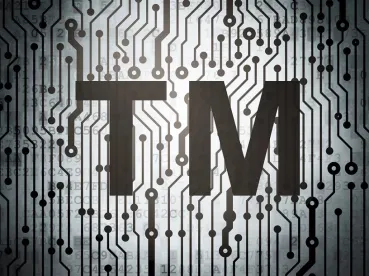In Miller UK Ltd. et al. v. Caterpillar Inc., a jury has awarded Miller $24.9 million in compensatory damages and $49.7 million in exemplary (i.e., punitive) damages for Caterpillar’s misappropriation and misuse of confidential information and trade secrets, in violation of the parties’ contract and the Illinois Trade Secrets Act. (Dkt. No. 10-cv-03770, N.D. Ill.)
Miller’s total award, if the verdict is upheld, will be reduced by the $1 million awarded to Caterpillar in compensatory damages for Miller’s commercial disparagement of Caterpillar in violation of the Illinois Deceptive Trade Practices Act and common law defamation.
Background
Miller, a British company, designs and manufactures proprietary quick couplers, buckets, and other attachments for various earthmoving companies. In 1999, Miller entered into a Supply Agreement with Caterpillar to design and manufacture quick couplers for Caterpillar. According to Miller’s complaint, under the Supply Agreement Miller was obligated to provide its proprietary trade secret and confidential information to Caterpillar. In turn, Caterpillar was obligated to maintain as confidential any proprietary trade secret and confidential information provided by Miller.
Miller claimed to have provided various pieces of confidential and proprietary information, some embodying trade secrets, over the years including physical and electronic documents, drawings, photographs, schematics, prototypes, as well as access to its manufacturing facilities and engineers.
But in 2005, Miller heard rumors that Caterpillar was developing its own coupler. According to Miller, when Caterpillar was confronted with this information, Caterpillar did not respond truthfully. And yet at the same time, Miller alleged that “under the guise” of testing and market research, Caterpillar kept asking Miller for more detailed technical information. Finally, in 2008, Caterpillar informed Miller that it had developed its own coupler, the “Center-Pin Lock Grabber Coupler.” Caterpillar also informed Miller that it would be terminating the Supply Agreement.
Miller sued Caterpillar in 2010 for claims including breach of contract and misappropriation of trade secrets, alleging that the “Center-Pin Lock Grabber Coupler” was designed using Miller’s confidential and proprietary information and trade secrets, which were misappropriated and misused in violation of the Supply Agreement.
Then in 2011, Miller distributed a communication package to various equipment dealers in the earthmoving industry, making the claim that the quick coupler Caterpillar had developed was potentially unsafe, a strategy that Miller employees termed the “Cat Attack.” Caterpillar then counterclaimed against Miller for claims including common law defamation and commercial disparagement under the Illinois Deceptive Trade Practices Act.
The eight-week trial was conducted in front of the Judge Wood of the U.S. District Court of the Northern District of Illinois.
Contested Issues
A central issue, subject of an unsuccessful summary judgment motion by Caterpillar, was whether any of the items disclosed to Caterpillar actually qualified as proprietary information under the Supply Agreement, and whether Miller actually kept its information secret and confidential. Although a copy of the jury verdict form was not available at the time of publication, it is clear that the jury agreed that at least some of the information that Miller disclosed to Caterpillar was confidential and qualified for trade secret protection, and that Caterpillar’s coupler was based at least in part on the information disclosed.
Also at issue was whether Caterpillar’s actions warranted “exemplary damages” under the Illinois Trade Secrets Act. Under the Illinois Trade Secrets Act, a court may award exemplary damages in an amount up to twice the plaintiff’s damages where the misappropriation is willful and malicious. 765 ILCS § 1065/4(b). This includes “intentional misappropriation as well as a misappropriation resulting from the conscious disregard of the rights of another.” Learning Curve Toys, Inc. v. PlayWood Toys, Inc., 342 F.3d 714, 730 (7th Cir. 2003). As Judge Wood wrote in her summary judgment opinion, Caterpillar was well aware of Miller’s coupler and its features as a result of their prior partnership, and the record contained “ample evidence” showing that Caterpillar’s use of the information was in willful disregard of Miller’s rights. (Dkt. 871 at 11-12). The jury’s award of $49.7 million in exemplary damages, just shy of two times the amount of compensatory damages awarded to Miller, reflects just how egregious the jury found Caterpillar’s behavior to be.
Finally, whether Miller’s 2011 “Cat Attack” communication to various dealers was accurate was also at issue. At the summary judgment stage, Judge Wood determined, as a matter of law, that as regards Caterpillar’s defamation claim, Miller’s communications were subject to Illinois’ qualified privilege. This meant that in order to succeed on its defamation claim, which it did, Caterpillar would have to show that Miller had either intended to injure Caterpillar or released its 2011 communication with reckless disregard for Caterpillar’s rights and the consequences of a potentially false communication. In denying Caterpillar’s summary judgment motion, Judge Wood stated that there was evidence on the record that Miller was motivated by a desire to harm Caterpillar’s reputation, and it appears that the jury likely agreed.
It remains to be seen whether this verdict will stand, and what steps, if any, Caterpillar will take to reduce or appeal this jury verdict.
Takeaways
When developing a new product to replace one that has been supplied by a vendor, the best protection against a trade secrets claim by that vendor is being able to prove independent development of the new product. Clients can help ensure that they have that proof by creating the new product under “clean room” measures (using employees different from those responsible for working with the vendor and keeping all development work separate and segregated from the people and information related to the vendor’s product) and documenting the independent development of the new product.



 />i
/>i
